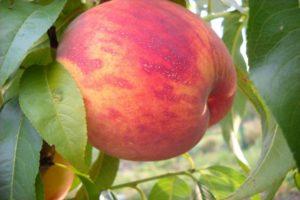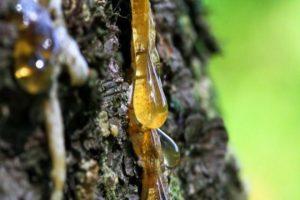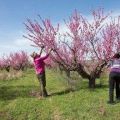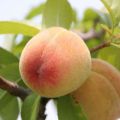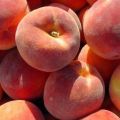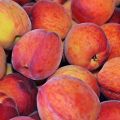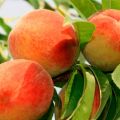Description of the best peach varieties for the Moscow region, planting and care in the open field
Until recently, a peach in the cool suburbs was considered a wonder. Not every gardener could afford to grow a southern culture in the garden. But the work of breeders does not stand still. Today they have already presented a variety of varieties of this crop, suitable for cultivation in a risky region. They require shelter and increased attention, but they allow you to harvest fruits with excellent refreshing taste every year.
Is it possible to grow a peach in the Moscow region?
Not so long ago, only a few exotic gardeners were engaged in the cultivation of peaches in the Moscow Region. Now, with the correct selection of the variety, even a novice amateur can get tasty, fragrant and healthy fruits at their summer cottage. What requirements should a peach meet for the Moscow region? What are the best varieties bred for this region?
The plant must be frost-resistant, preferably of local selection. It is preferable to choose early ripening dates, but medium ones are also suitable. Foreign seedlings are poorly acclimatized in our conditions and often do not survive the harsh winter. It often rains in the summer in the Moscow region, so the tree must have good resistance to fungal pathogens.
The best varieties suitable for the region
The experience of gardeners who practiced growing peaches in the open field in the Moscow region allows us to conclude which varieties are best suited for these weather conditions and bring yields.
Favorite of Morettini
The variety appeared as a result of the work of Italian breeders. Fruiting occurs 2-3 years after the seedling was planted. Up to 30 kg of peaches are removed from each adult tree. Commodity and taste indicators were highly appreciated.
Fruits ripen early, weigh up to 115 g. The shape of the fruit is round, slightly elongated. When ripe, they acquire a yellow velvety color with a slight blush on the sides. The pulp is juicy and has a strong aroma. Pulp with bone is difficult to separate. The crop is not suitable for long distance transportation. Peach is prone to powdery mildew disease and needs preventive treatments.
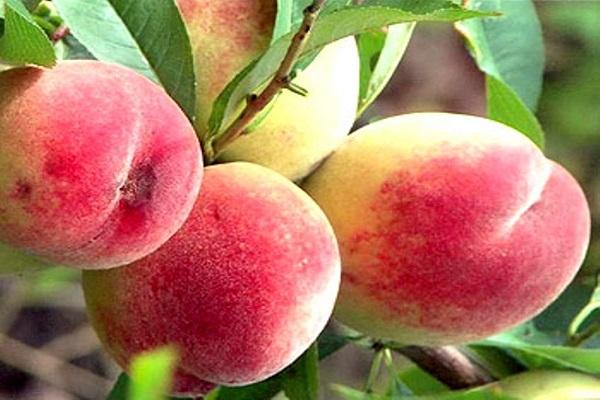
Greensboro
The tree is medium in size. The variety is self-fertile, columnar. The first crop gives in 3 years after planting the seedling.An adult tree produces up to 60 kg of ripe peaches per season. The crop is not suitable for long distance transportation. The plant is frost-resistant, but requires preventive treatments for diseases.
Fruits grow weighing up to 130 g. They are oval in shape, slightly compressed from the sides, dull apex, there is a small original fossa. When ripe, the fruit acquires a greenish-cream color, one quarter of the area is covered with a blush. The taste is classic, sweet, with a barely perceptible sourness, strong aroma. The stone is poorly separated from the pulp.
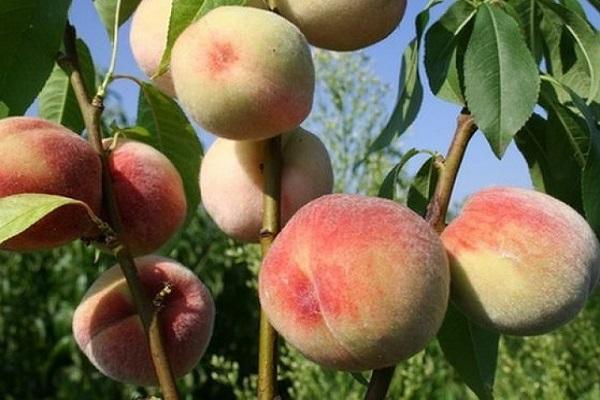
Redhaven
Medium-sized tree with a round crown. Fruits are large, oval-shaped, unequal. When ripe, they acquire a yellow color with a red blush, pubescent. The pulp is firm, characterized by excellent taste. American breeders worked on breeding the culture, but it demonstrates excellent results in the climate near Moscow.
The variety has increased frost resistance and immunity to curliness, but is prone to infection with fungal diseases. Timely preventive measures help to avoid infection by viruses and damage by pests. A mature tree produces up to 100 kg of high quality peaches.
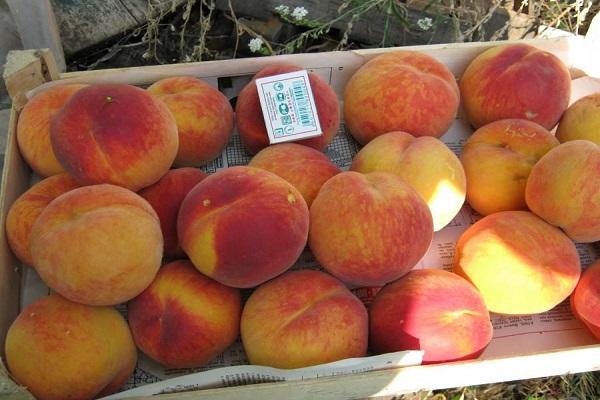
Kiev early
Medium-sized tree with a rounded, wide crown. Fruits grow weighing up to 90 g. Their shape is oval, at the top there is a characteristic beak. Ripe peaches are creamy and slightly pubescent. The taste is sweet and sour, the smell is classic, strong, the flesh is transparent. The bone is difficult to separate.
An adult tree produces up to 50 kg of fruit. Plant resistance to powdery mildew and clotterosporium pathogens is high. It does not tolerate drought or excess moisture in the soil. The tree is prone to curliness and needs preventive treatments.
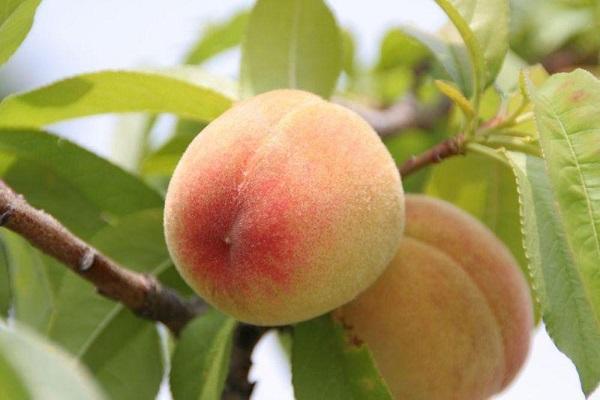
Collins
The variety is self-fertile, grown as medium early. It was bred by American breeders, but it is successfully cultivated in the Moscow region. Peaches weigh up to 150 g. The taste is pleasant, with barely noticeable sourness. Ripe fruits are red-yellow in color with small dots. The crop must be removed from the tree in a timely manner, otherwise the branches may break. Fruit ripening does not occur simultaneously.
An adult tree brings up to 50 kg of harvest. Frost resistance and immunity to powdery mildew and curliness are high. Peach requires timely irrigation, top dressing, pruning and crown molding.
Early champion
The tree is tall, spreading, thickened crown. Each adult plant is harvested up to 70 kg. Fruiting is regular. Peaches grow in mass up to 160 g. When ripe, they become greenish-creamy, covered with a blush throughout the entire area. The content of sugars and acids in the fruits is increased, the taste characteristics are excellent. The bone with pulp does not separate well.

Juicy
The peach is self-fertile, self-pollinated, large-fruited. It is capable of self-overload due to the abundance of fruits. The tree is tall, spreading. The mass of one fruit reaches 200 g. Fruits are oval in shape and greenish-cream color with a bright blush. The pulp is characterized by a strong classic aroma and harmonious taste. The bone and pulp are difficult to separate. The plant exhibits increased resistance to fungal diseases. The variety is winter hardy. Up to 70 kg of fruits are removed from each adult tree.
Golden anniversary
American scientists worked on the breeding of the variety, but it is cultivated with great success in the conditions of the Moscow region. Peaches are round in shape, slightly flattened from the sides. When ripe, they acquire a golden yellow color with a pronounced blush and slight pubescence. The aroma is strong, the taste characteristics are high. The bone and pulp are difficult to separate.
The tree can grow to medium size, the crown is branched. Fruiting is regular.Each adult plant produces up to 50 kg of fruit. Average frost resistance.
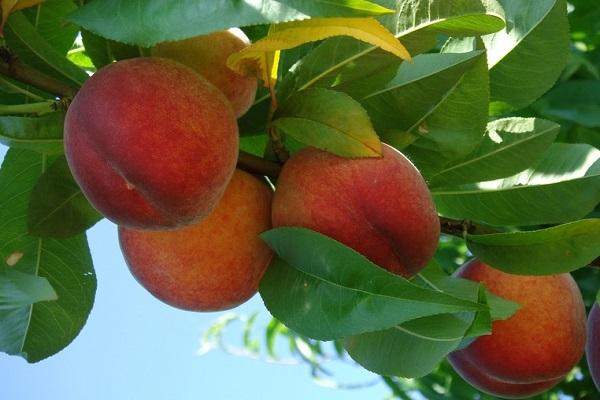
White Swan
Medium early self-fertile variety with increased drought resistance. The crown is not spreading. Fruits reach a weight of 150 g. They are suitable for transportation and short-term storage. Each adult tree gives up to 60 kg of harvest. Peaches are broad-oval, with a sweet taste and a light honey flavor. The pulp and bone are not separated well. The variety is frost-resistant, with good resistance to major diseases. Flower buds endure recurrent frosts in spring.

Features of growing crops
There are some peculiarities of growing peaches in the Moscow region. Compliance with them will save you from unnecessary care and will allow you to collect a rich harvest.
Landing time and place
Peaches are grown on any soil that has good drainage. The best result was achieved on moderately calcareous loamy soil. Planting seedlings cannot be carried out on areas where previously cultivated:
- strawberries;
- alfalfa;
- clover;
- tomatoes.
Should not be nearby:
- cherries;
- apple trees;
- pears.
The selected area should be well lit by the sun, be closed from drafts and cold winds.
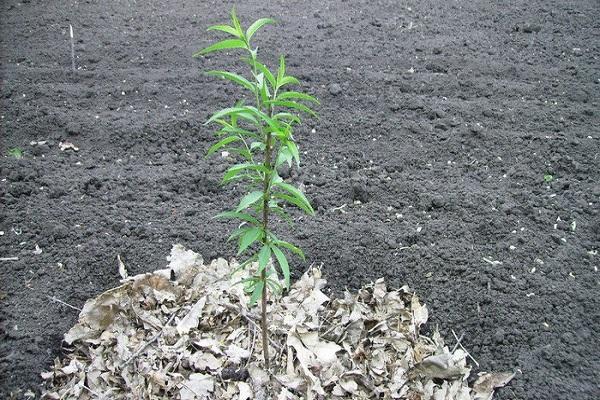
Selection and preparation of planting material
For cultivation in the Moscow region, you should choose the varieties of peaches bred by local breeders or zoned for this region. Seedlings are preferably purchased from local nurseries. Their age should be from 1 to 2 years. It is these plants that take root best.
The height of a tree suitable for planting is about 1.2 m, and the thickness of the main trunk is 1.5 cm. The buds should be fully formed, and the developed crown should contain 4 branches. The root system of the seedling chosen for cultivation is well formed, does not have external damage and defects, as well as signs of decay or disease. Before planting, it is placed in a growth stimulator for several hours.
Planting scheme and process
Before planting a peach, the soil in the selected area is carefully dug up, weed roots are removed. If the soil is depleted, then fertilizers are applied in advance. The increased acidity is neutralized by adding dolomite flour or wood ash. Saplings are planted according to the 4 x 3 or 4 x 4 m scheme.
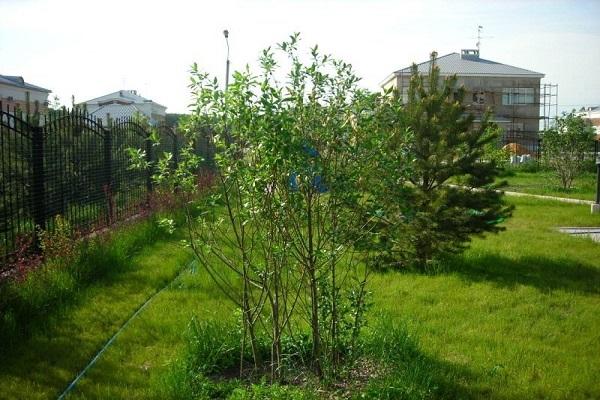
A planting hole for a peach is dug 0.6 m deep, and not less than 0.5 m in diameter. On fertile land, a hole is dug 0.7 x 0.7 m in size. A bucket of water is poured into it. After the moisture is absorbed, place the tree in the hole and gently spread the roots to it, and then cover it with nutritious soil mixture, tamp and water abundantly.
It is advisable to mulch the soil in the peach trunk circle. For these purposes, use:
- peat;
- humus;
- crumb of tree bark;
- needles.
The nuances of caring for peaches in the Moscow region
The yield and health of a peach largely depends on adherence to the rules of agricultural technology, as well as on how correctly the care was carried out. The climatic conditions of the Moscow region make their own adjustments to these procedures.
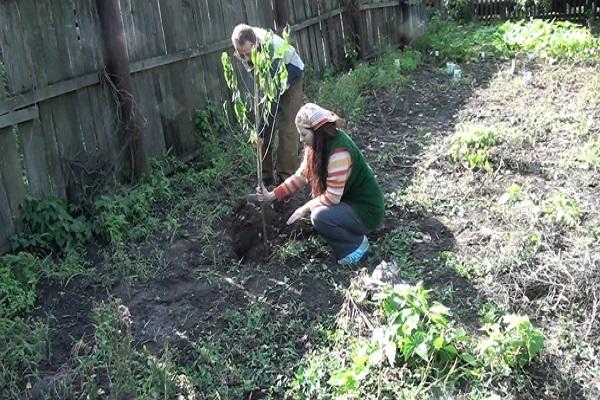
Formation
A peach planted on the site requires crown molding already in the first autumn. Its top is shortened in such a way that the height of the seedling from the soil level is 0.5 m. Adult trees require sanitary pruning every spring, as a result of which all broken and frozen branches are removed.
Peach shaping pruning is done in the fall. At this time, strongly overgrown branches are removed, competing with skeletal branches. A peach about 10 years old needs rejuvenating pruning.
Top dressing and watering
In hot and dry weather, the peach must be watered. 45 liters of water is added under each adult plant. In the spring, fertilizers with a high nitrogen content are applied under the tree. This allows him to quickly build up green mass.In the summer and autumn, it is required to apply top dressing, which includes potassium and phosphorus.
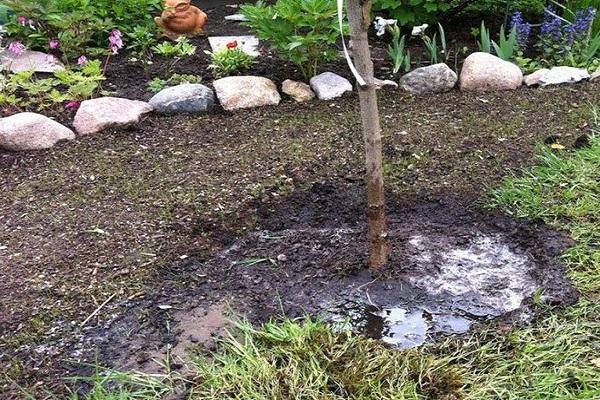
Shelter for the winter
The climatic conditions of the Moscow region force gardeners to carefully prepare peaches for winter. Immediately after dropping the foliage, they are spud. After a while, when the soil settles down, they organize insulation from spruce branches, wood shavings or needles. Sawdust and fallen leaves are not used for winter shelter, since they accumulate moisture, freeze, and also serve as a secluded place for pests.
Peach for the winter is covered with non-woven material (agrofibre) to prevent freezing and damage by rodents.
Diseases and pests
Peaches are prone to diseases:
- fruit rot;
- powdery mildew;
- moniliosis;
- clotterosporiosis.
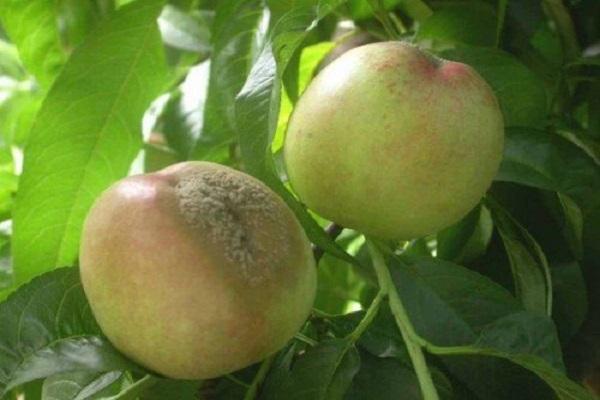
In order to prevent the appearance of diseases, the tree must be treated in a timely manner with a Bordeaux mixture, colloidal sulfur, copper-containing fungicides.
Of the pests, peaches often affect:
- aphid;
- ticks;
- fruit striped moth;
- weevils;
- eastern moth.
In order to prevent their appearance in autumn, it is necessary to collect fallen leaves and remove weed residues, carry out sanitary pruning, whitewash the trunks and skeletal branches of a tree, install trapping belts, treat the garden with insecticides and fungicides.
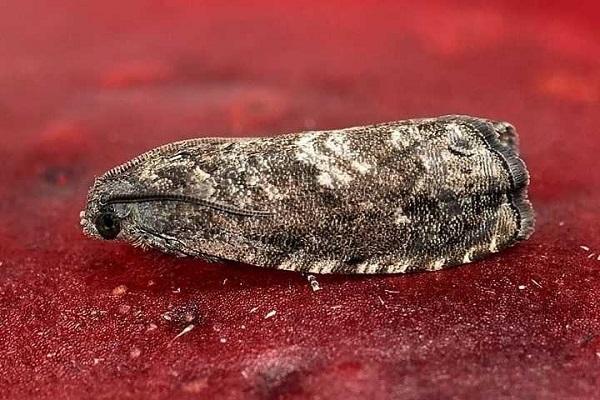
Peach propagation
There are two main ways to breed a peach:
- seminal;
- vegetative.
The first one is very convenient and widespread, requiring little effort and no practical skills. However, it has a drawback: the grown tree may not transfer the properties of the parent variety. But such a seedling will be more resistant to climatic conditions and pathogens.
The vegetative method of propagation of a peach involves grafting with a cuttings. What to plant a peach on in the suburbs? In this case, healthy seedlings of self-fertile apricots, winter-hardy varieties of plums can serve as stock. Cuttings are harvested in the first decade of June. The method is based on the ability of plants to regenerate.
